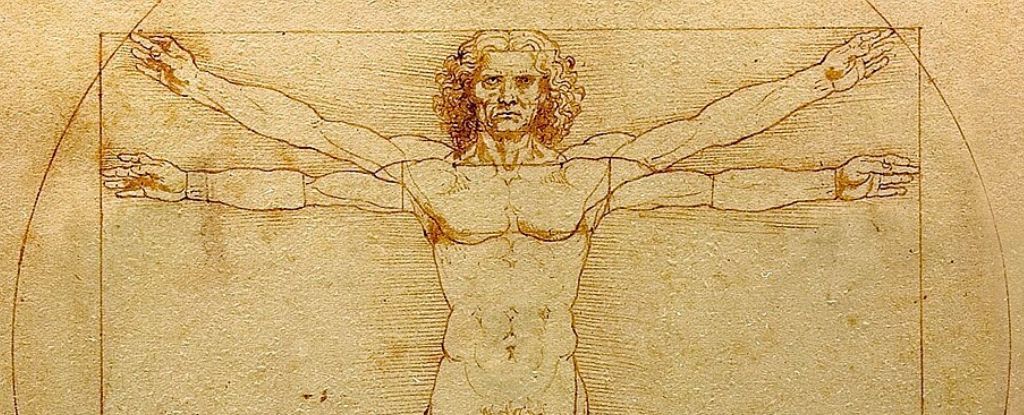
Leonardo da Vinci’s iconic drawing, the Vitruvian Man, has long intrigued art historians and mathematicians alike. A recent discovery by London dentist Rory Mac Sweeney suggests that a hidden geometric detail may finally explain the specific proportions of this masterpiece. Mac Sweeney identifies an equilateral triangle tucked within the illustration, potentially solving a mystery that has persisted for over 500 years.
The Vitruvian Man, created in 1490, is inspired by the writings of the Roman architect Vitruvius, who argued that the perfect human form should fit within both a circle and a square. The drawing features a “cruciform pose,” with arms outstretched and legs positioned closely together within a square. A circle surrounds the figure, representing a posture with arms raised and legs apart. While many have speculated that the proportions are based on the Golden Ratio, Mac Sweeney’s findings suggest a different mathematical foundation.
According to Mac Sweeney, the key lies in a detail that has been “hiding in plain sight.” In his notes, da Vinci mentioned that if a person opens their legs and raises their hands until their fingers touch the top of their head, the space between their legs will form an equilateral triangle. After conducting his analysis, Mac Sweeney found that the ratio between the spread of the feet and the height of the navel in the Vitruvian Man is approximately 1.64 to 1.65. This closely aligns with the tetrahedral ratio of 1.633, which was formally established in 1917.
The tetrahedral ratio is significant in various fields, including packing spheres efficiently. For example, when four spheres are arranged into a pyramid, the height-to-base ratio from their centers measures 1.633. Mac Sweeney draws a parallel between this ratio and a triangular principle in dentistry known as Bonwill’s triangle, which has been utilized since 1864 to determine optimal jaw positioning.
Mac Sweeney proposes that the presence of the tetrahedral ratio in both human anatomy and natural structures indicates that “human anatomy has evolved according to geometric principles that govern optimal spatial organization throughout the universe.” His assertion implies that da Vinci may have unintentionally tapped into universal mathematical truths while creating the Vitruvian Man.
The implications of Mac Sweeney’s findings extend beyond art history. He posits that the same geometric relationships found in optimal crystal structures and biological architectures appear in human proportions. “Leonardo intuited fundamental truths about the mathematical nature of reality itself,” Mac Sweeney states in his research published in the Journal of Mathematics and the Arts.
While the scientific community may take time to evaluate Mac Sweeney’s claims, the fact that da Vinci explicitly referenced the equilateral triangle in his notes reinforces the significance of this discovery. As scholars continue to explore the complexities of da Vinci’s work, Mac Sweeney’s research provides a fresh perspective on the intersection of art and mathematics, potentially reshaping our understanding of one of history’s most celebrated figures.






